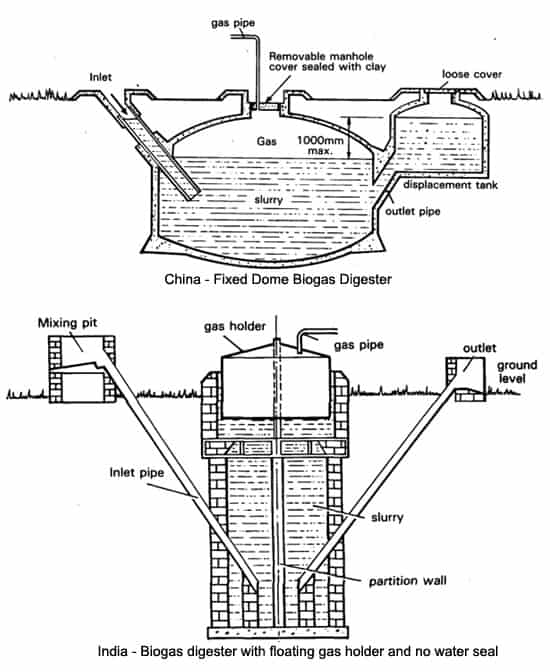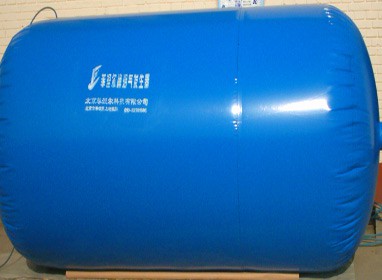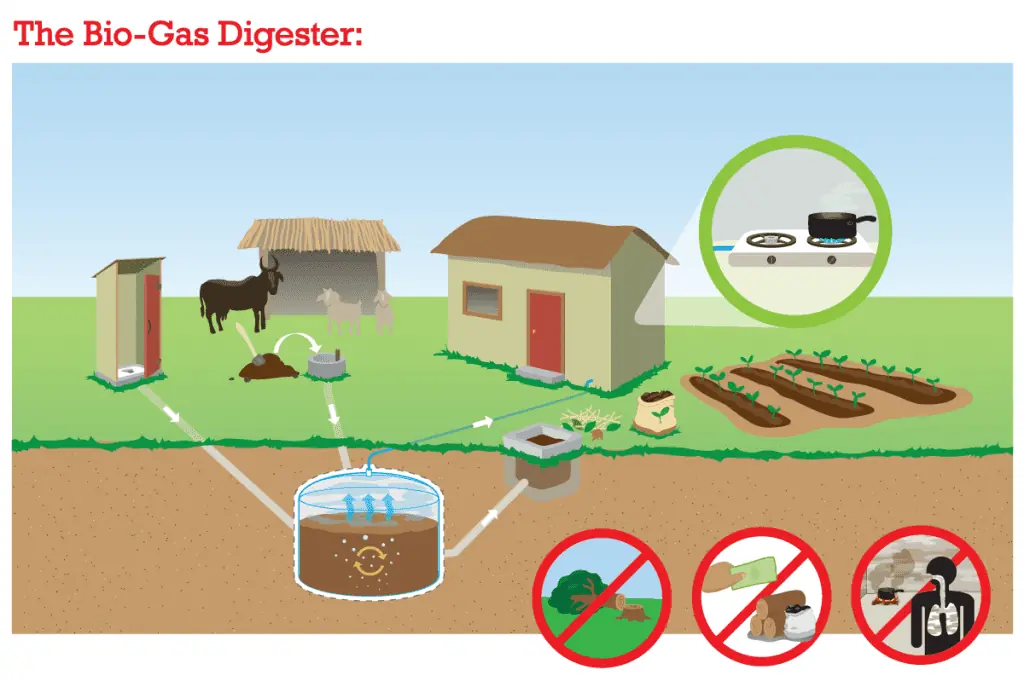Methane and Biogas
Biogas is a fuel produced by a digestion device using agricultural, animal or household waste. A biodigester or biogas plant tank contains the waste slurry. Not only does the biogas plant produce fuel, but it has also added benefits. Such as producing high-nutrient fertilizers and better sanitation.
Methane and biogas – The methane released from animal manure is a significant constituent of greenhouse gas. Compared to carbon dioxide and the global warming potential, methane is 25 times more potent (over 100 years) than carbon dioxide. Using waste and burning methane reduces green house gas emissions. There is a difference between biogas and biomethane, with the latter being much more refined.
There are many different type of methane and biogas plant designs. The Chinese ‘fixed dome’ and the Indian ‘floating gas holder’ designs are the most widely used.
The fixed-dome methane and biogas design below consists of a lower segment, for the digester. Plus the hemisphere over it (for both digester and gas holder). A pipe connects the mixing tank to the digester. As the new slurry enters the digester, the pressure pushes the material into the outlet tank. This overflows through another hole provided in the outlet tank.

The floating-drum methane and biogas plant has an underground digester. Inlet and outlet pipes connect to the digester. The inverted steel gas holder rises and falls depending on the accumulation and withdrawal of gas.
The bag-type plant is a high-strength PVC-polyester fabric. The bag system suits low-pressure stoves and lamps. These can be much cheaper but don’t last for the same period as the two designs mentioned above.

The download section is a great starting place. Designed to assist you with building your own methane and biogas plant.


Leave a Reply
You must be logged in to post a comment.